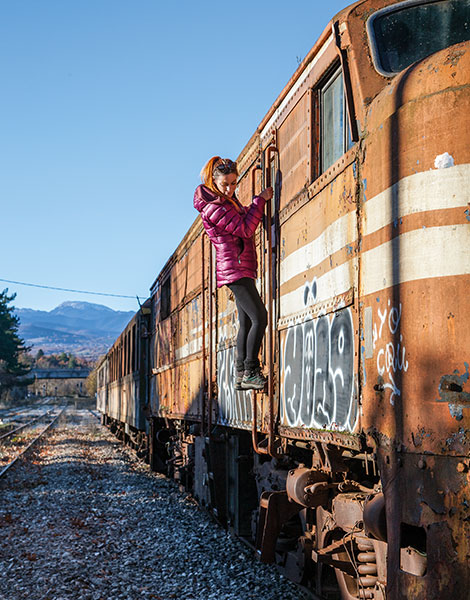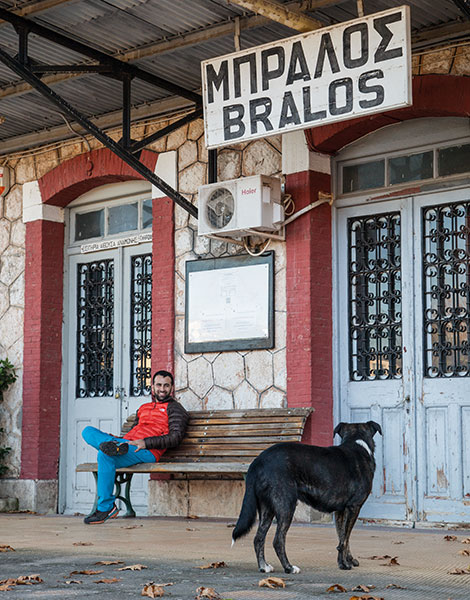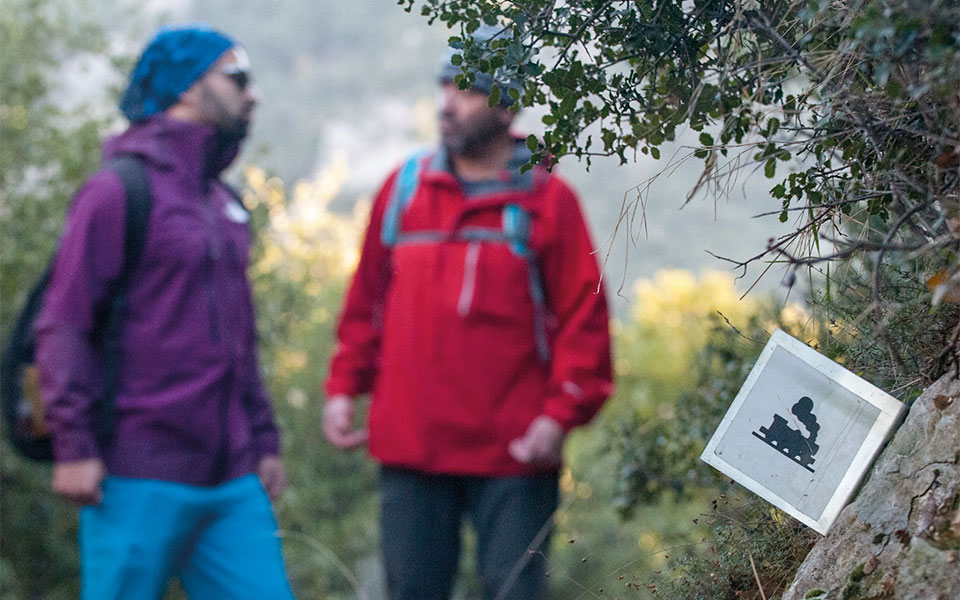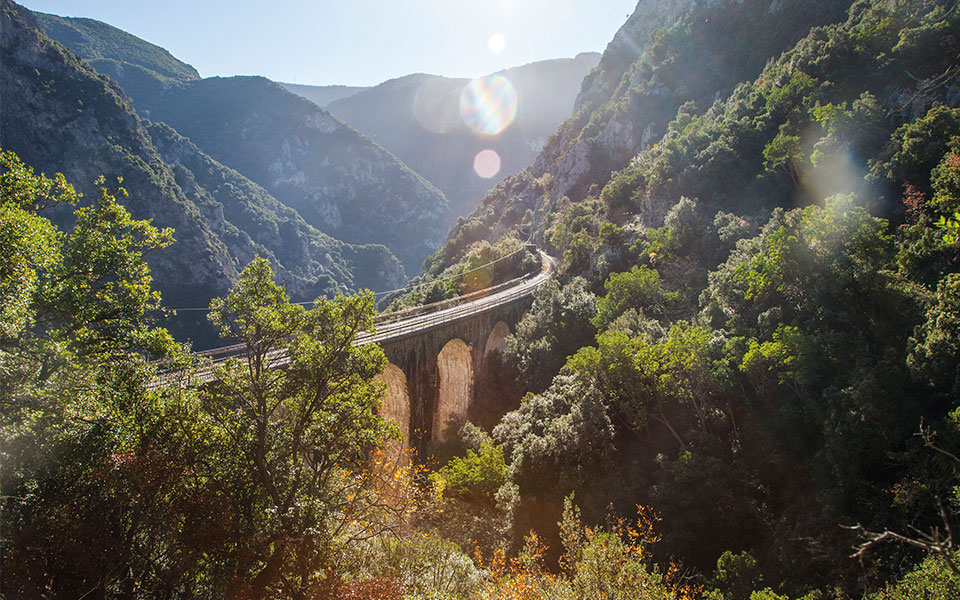“Wake up, wake up! Dawn is coming, can’t you hear the birds chirping?” Our traveling companion Ion is trying to teach us a little catchphrase; as an educator who introduces children to the beauty of nature, he often uses such tactics to raise group spirits. Inside the Asopos Gorge, we can indeed hear the birds while the winter sunlight warms us up and creates interesting contrasts on the canyon walls. I wonder about the workers who were using this path in 1890; what was their mood like each day, back when Charilaos Trikoupis passed a law in Parliament compelling the completion of the railway to connect Lamia with Piraeus and Larisa? Perhaps not so great right here; the section from Bralos to the Spechios Valley and Lianokladi – in other words, the part which runs through the Asopos Gorge – was destined to become a major hitch in the project.
Many different construction companies were assigned responsibility for this section, by far the most challenging part of the line, before it was officially ready to operate in 1908. Small wonder it was so challenging; it included the Bralos Tunnel, measuring two kilometers, as well as multiple bridges and other, smaller, tunnels, tunnels here and at Oiti. This particular section operated until 2018, when the new route via the Kallidromou Tunnel was inaugurated. There are now plans to create a scenic train route in view of the history, natural beauty and wonderful engineering involved in this section of track. It is for these same reasons that the Railway Track Walkway Path, which hundreds of Greek and foreign workers used for transporting materials and livestock during the construction of the track, was preserved and restored.

© Olga Charami

© Olga Charami
The starting point of the trail is located just outside the village of Iraklia, opposite the little church there. You could leave your car here but please note that we observed broken car windows when we passed through here, so theft might be an issue. The start of the path is along an uphill, rather rough dirt road, so those who have a jeep or similar vehicle might wish to continue a little bit further before continuing on foot.
The Asopos Gorge is beautiful; hikers can see it from above, as the path runs alongside the ravine’s northwestern walls. On one side lies the village of Oiti, on the other the village of Kallidromo. The terrain is level, albeit rocky, and snakes around under tall cliffs pockmarked with large caves. Even though signage is kept to the bare minimum, it’s very difficult to get lost.

© Olga Charami
Gradually, the train tracks begin to recede below us in the thick vegetation, until we come across the first large bridge: a marvelous feat of engineering that’s even more impressive considering it was constructed in such a rugged location. You can imagine workers and the animals transporting rails and ballast stones, perhaps hewing into the rock on the spot and opening tunnels using just pickaxes. This middle section of the path is the most beautiful, even though it is quite far from the tracks. Eventually, you exit the gorge and enter a forest with low vegetation, dotted with oak and strawberry trees. We approach a dirt road, turn left and reacquire the path, which is now essentially on the train tracks, and which will soon lead us to the end of the route, at the Asopos train station, no longer in operation.
The path we took is four and a half kilometers in length and shouldn’t take more than two hours to cover. Most of it is fairly easy going, and while it climbs a total of 240 meters, you don’t really feel it. The only part where extra attention is needed is at three sections in the first half of the trail, where minor landslides have left scree underfoot – one such portion has steel wire rope for protection.
It would be best to take the same route back, although you could exit the dirt pathway at the village of Delfino, but you will need to have pre-arranged a ride. Alternatively, you can continue hiking for an additional two hours until Pavliani, or return through the gorge, which is not advisable during the winter months as the route crosses the river bed. Returning via the train tracks is also dangerous. When the train route begins operating again for local runs, you’ll be able to take the train to Asopos station and then walk the historic trail from there, and what could be better than that?












